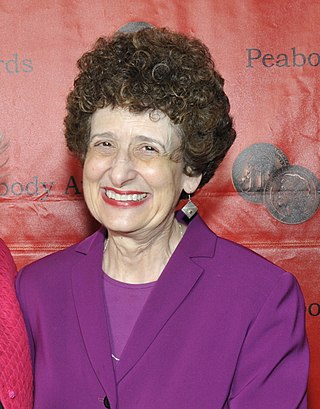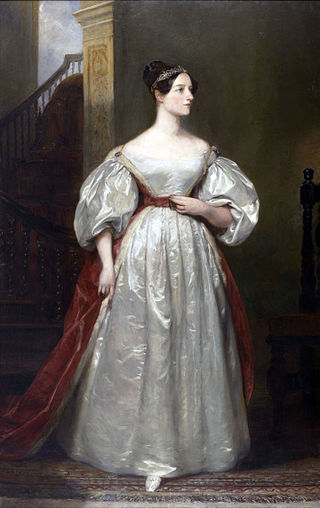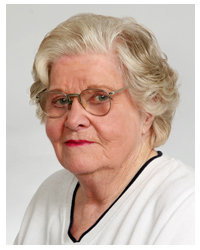Related Research Articles

The Advanced Research Projects Agency Network (ARPANET) was the first wide-area packet-switched network with distributed control and one of the first computer networks to implement the TCP/IP protocol suite. Both technologies became the technical foundation of the Internet. The ARPANET was established by the Advanced Research Projects Agency (ARPA) of the United States Department of Defense.

The history of computing is longer than the history of computing hardware and modern computing technology and includes the history of methods intended for pen and paper or for chalk and slate, with or without the aid of tables.

Janet Horowitz Murray is an American professor in the School of Literature, Media, and Communication at the Georgia Institute of Technology. Before coming to Georgia Tech in 1999, she was a Senior Research Scientist in the Center for Educational Computing Initiatives at MIT, where she taught humanities and led advanced interactive design projects since 1971. She is well known as an early developer of humanities computing applications, a seminal theorist of digital media, and an advocate of new educational programs in digital media.

Women in computing were among the first programmers in the early 20th century, and contributed substantially to the industry. As technology and practices altered, the role of women as programmers has changed, and the recorded history of the field has downplayed their achievements. Since the 18th century, women have developed scientific computations, including Nicole-Reine Lepaute's prediction of Halley's Comet, and Maria Mitchell's computation of the motion of Venus.

Frances Elizabeth Holberton was an American computer scientist who was one of the six original programmers of the first general-purpose electronic digital computer, ENIAC. The other five ENIAC programmers were Jean Bartik, Ruth Teitelbaum, Kathleen Antonelli, Marlyn Meltzer, and Frances Spence.

Jean Bartik was one of the original six programmers of the ENIAC computer.
Systers, founded by Anita Borg, is an international electronic mailing list for technical women in computing. The Syster community strives to increase the number of women in computer science and improve work environments for women. The mailing list has operated since 1987, making it the oldest of its kind for women in computer science. It is likely the largest email community of women in computing.

This is a timeline of women in computing. It covers the time when women worked as "human computers" and then as programmers of physical computers. Eventually, women programmers went on to write software, develop Internet technologies and other types of programming. Women have also been involved in computer science, various related types of engineering and computer hardware.
Judith A. Clapp is a computer scientist who began her career at the Massachusetts Institute of Technology (MIT) and subsequently moved to the Lincoln Laboratory and then to MITRE, where she was a leader in the Semi-Automatic Ground Environment (SAGE) military project, including the development of the SAGE computer.
Hilary J. Kahn (1943–2007) was a South African British computer scientist who spent most of her career as a professor at the University of Manchester, where she worked on computer-aided design and information modelling. Kahn participated in the development of the Manchester MU5 computer. Later she became involved in standards development and was both the chair of the Technical Experts Group and a member of the Steering Committee for the development of the EDIF standard. Kahn retired from Manchester in 2006 and died in 2007.
Mary Clare Coombs was a British computer programmer and schoolteacher. Employed in 1952 as the first female programmer to work on the LEO computers, she is recognised as the first female commercial programmer. The National Museum of Computing documents her contribution.
Gillian Lovegrove is a retired computer scientist and academic. She was Dean of the School of Informatics at Northumbria University, president of the Conference of Professors and Heads of Computing and was Higher Education consultant to the British Computer Society and manager of its Education and Training Forum. She is known for her interest in gender imbalance in computer education and employment, and her public discussion of possible solutions to a shortage of information technology graduates in the UK.

Gender disparity in computing concerns the disparity between the number of men in the field of computing in relation to the lack of women in the field. Originally, computing was seen as a female occupation. As the field evolved, so too did the demographics, and the gender gap shifted from female dominated to male dominated. The believed need for more diversity and an equal gender gap has led to public policy debates regarding gender equality. Many organizations have sought to create initiatives to bring more women into the field of computing.
Eleanor D. L. Ireland was an early British computer scientist and member of the Women's Royal Naval Service.
Elsie Shutt is an American computer programmer and entrepreneur. She founded Computations Incorporated (CompInc) in 1957, when she was not permitted to work part-time at home after she became pregnant. Shutt was one of the first women to start a software business in the United States.
Ann Hardy was an American computer programmer and entrepreneur, best known for her pioneering work on computer time-sharing systems while working at Tymshare from 1966 onwards.
Sylvia B. Wilbur was a British computer scientist who helped develop the ARPANET, was one of the first to exchange email in Britain, and became a leading researcher on computer-supported cooperative work.
Marlene Hazle was an American known for her work in computer science throughout the 20th century. She worked at RAND Corporation and Mitre Corporation for development of the Semi-Automatic Ground Environment and AESOP respectively. Hazle eventually became a supervisor and trained military personnel on the SAGE operating system. Hazle continued making contributions to the fields of computer science and aerospace throughout the 20th century.
Susan Bond, was a scientific officer and computer programmer for the Mathematics Division of the Royal Radar Establishment (RRE) in the United Kingdom. She worked extensively on the programming language ALGOL 68 and the Royal Radar Establishment Automatic Computer (RREAC), an early solid-state electronics, ICL 1907F computer.
Bobby Hersom is a British mathematician and computer scientist known for her early work on computers at Elliott Brothers, Hatfield Polytechnic, and the Rothamstead Agricultural Research Station.
References
- 1 2 3 "Janet Abbate". liberalarts.vt.edu. Retrieved 2021-04-16.
- 1 2 Abbate, Janet. "Personal website". Archived from the original on 28 March 2017. Retrieved 22 August 2015.
- ↑ "Oral History: Women in Computing" . Retrieved 22 August 2015.
- ↑ "Janet Abbate explores history of female computer programmers; offers perspective on gender imbalances and future strategies". Virginia Tech News. 2013-02-12. Retrieved 2015-08-23.
- 1 2 Trinkle, Dennis A. (2000). "Inventing the Internet (Janet Abbate)". Journal of the Association for History and Computing. 3 (3).
- 1 2 McKim, Joel (2001). "Review: Inventing the Internet by Janet Abbate". Canadian Journal of Communication. 26 (1). doi: 10.22230/cjc.2001v26n1a1202 .
- ↑ Kahin, Brian; Abbate, Janet (1995). Standards Policy for Information Infrastructure. MIT Press. ISBN 978-0-262-11206-2.
- ↑ Abbate, Janet (2000). Inventing the Internet (1st MIT pbk. ed., 2000. ed.). Cambridge, Massachusetts [u.a.]: MIT Press. ISBN 978-0262511155.
- ↑ Abbate, Janet (2012). Recoding gender : women's changing participation in computing . Cambridge, Massachusetts: MIT Press. ISBN 978-0262018067.
- ↑ Alger, Jeff (1999). "Book Reviews: Inventing the Internet". Issues in Science and Technology Librarianship (24). doi:10.5062/F4222RR4.
- ↑ "General Communication". Communication Booknotes Quarterly. 31 (1): 55–59. 2000-03-01. doi:10.1207/S15326896CBQ3101_11. ISSN 1094-8007. S2CID 218576599.
- ↑ Abbate, Janet (2017). "What and where is the Internet? (Re)defining Internet histories". Internet Histories. 1 (1–2): 8–14. doi:10.1080/24701475.2017.1305836. ISSN 2470-1475. S2CID 64975758.
- 1 2 Hatton, Erin (2014-09-01). "Recoding Gender: Women's Changing Participation in Computing". Contemporary Sociology. 43 (5): 650–651. doi:10.1177/0094306114545742. ISSN 0094-3061. S2CID 143777255.
- ↑ Colatrella, Carol (2013). "Review of 'Recoding Gender: Women's Changing Participation in Computing' by Janet Abbate". International Journal of Gender, Science and Technology. 5 (1).
- ↑ "2014 Computer History Museum Prize | SIGCIS". www.sigcis.org. Retrieved 2021-04-16.